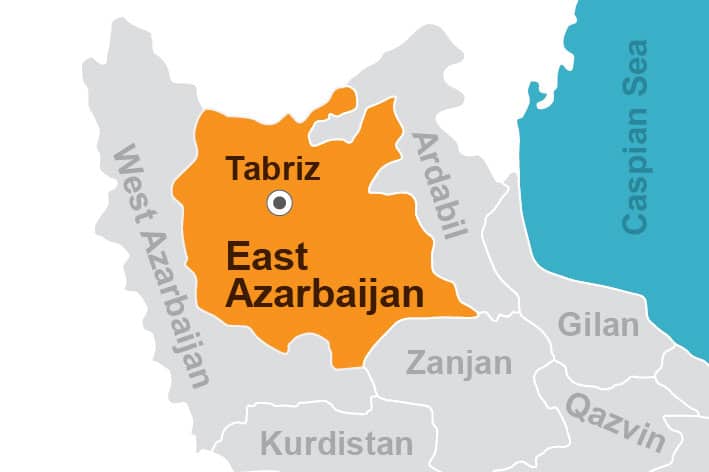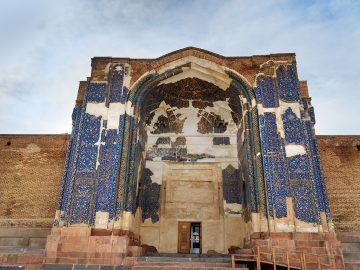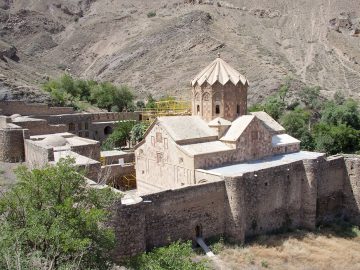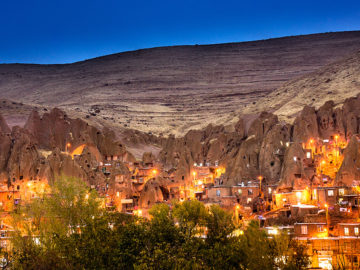East Azerbaijan Province is the largest and most populated province in the northwest of Iran. It neighbors the provinces of West Azerbaijan, Ardabil, and Zanjan as well as the countries of Armenia, Azerbaijan, and the Autonomous Republic of Nakhichevan. What specifies Iran’s border with these three neighboring countries is Aras River and furthermore, this province is the intersection of two main mountain ranges of Iran i.e., Zagros and Alborz with Sahand Summit as the highest point of this intersection.
East Azerbaijan’s area is 45,491 square meters, introducing it as the 11th largest province of the country. It has 21 counties such as Marand, Maragheh, and Mianeh as its most populated cities. It contains about five percent of the country’s population with Tabriz as its center city. The people living in this region speak Turkish with Azari Dialect.

The history of East Azerbaijan province dates back to the pre-Islamic period and the time of the Median Empire (678-549 B.C.) during which it was known as Little Medes. During the Achaemenid Empire (550-330 B.C.) and later after the invasion of Alexander, Azerbaijan became independent under the command of Atropatene. After the advent of Islam in 651 A.D. and when Omar became the Caliph, Muslims took control of Azerbaijan and then with the uprising of Babak Khorramdin, the influence of the Abbasid Caliphs was declined in the region.
Following the Mongol invasion and the arrival of Hulagu Khan during the 13th century, Azerbaijan was chosen as the center of the vast Mongol Empire. During the Safavid Dynasty (1501-1736), Shah Ismail I chose Tabriz as the capital of Iran and later in the Qajar Dynasty (1796-1925), Tabriz became a center of hosting Qajar princes.
This province has various types of climate due to its large area and high altitude. For example, on one hand, Mianeh and Jolfa have the highest temperature and on the other hand, Bostanabad has the lowest temperature. The cold and semi-arid climate of the province is attributed to its proximity to the Caspian Sea, Lake Urmia, the Black Sea, and the Mediterranean Sea. The highlands of this region are snowy and suitable for winter sports. Due to its natural and historical attractions, East Azerbaijan has become one of the favorite destinations in the country, attracting foreign and domestic tourists every year.
Some of the historical sites of the province include Tabriz traditional bazaar, the church of St. Stepanos in Jolfa (registered in the UNESCO’s World Heritage list), Tabriz Blue Mosque, the remnants of the Maragheh Observatory, and Kandovan Village.
The province is also rich in handicrafts and souvenirs, one of which includes Tabriz Carpet as a famous carpet of the province and Iran as well. Among its other souvenirs, a variety of nuts as well as various types of pastries such as Nougat, Rees, Baslogh, and Qurabiya are notable. Besides, Kebab and Kufteh are the most famous dishes of the region. Bonab Kebab which is a kebab made in the city of Bonab is such popular that it has turned into a national food, being served in most Iranian restaurants across the country.
In contrast, Kufteh is usually homemade food and one cannot find it in restaurants. When it comes to prominent figures, Sattar Khan and Baqir Khan as two leaders of Iran’s Constitutional Revolution were from East Azerbaijan. The province is also known for its literary and poet figures such as Gholam Hossein Sa’edi, Shahriar, Khaghani, Saeb Tabrizi, Parvin Etesami, Aref Murav, and Shams Tabrizi.



